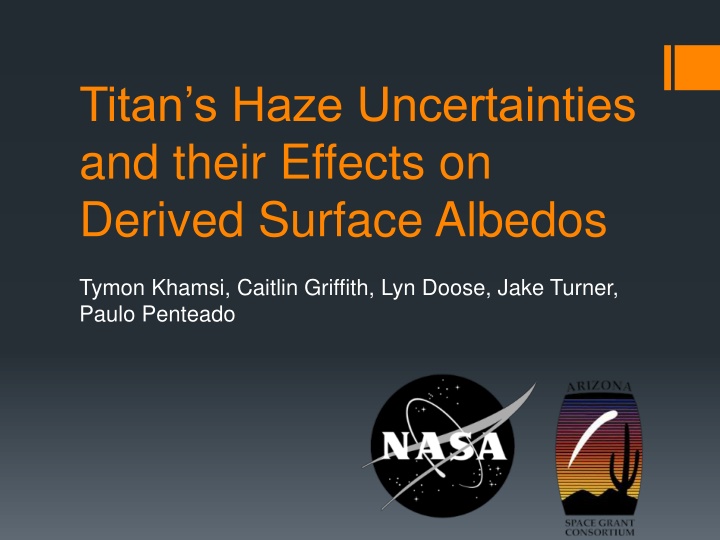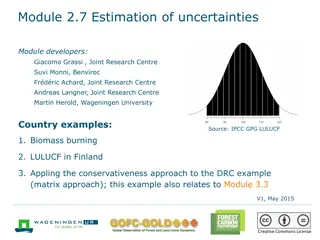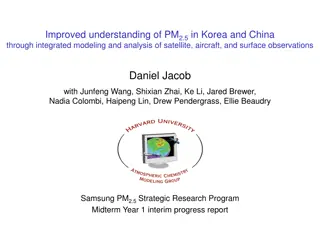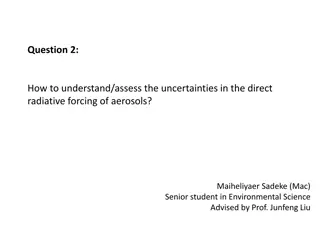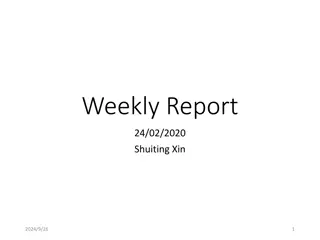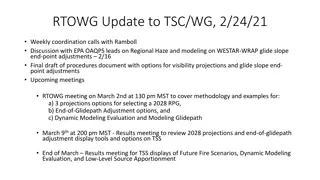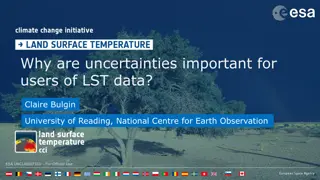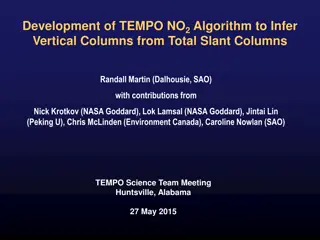Titans Haze: Uncertainties and Effects on Albedos
This research delves into Titan's haze, exploring its uncertainties and impact on derived surface albedos. The study sheds light on Titan's atmosphere, highlighting its composition, haze formation, and prebiotic potential. Through radiative transfer modeling and analysis of in-situ measurements, the findings reveal insights into the changing physical properties of Titan's haze and atmospheric circulation patterns. The study concludes with observations of increased particle size, challenging existing models and proposing selective circulation as a potential explanation.
Download Presentation

Please find below an Image/Link to download the presentation.
The content on the website is provided AS IS for your information and personal use only. It may not be sold, licensed, or shared on other websites without obtaining consent from the author.If you encounter any issues during the download, it is possible that the publisher has removed the file from their server.
You are allowed to download the files provided on this website for personal or commercial use, subject to the condition that they are used lawfully. All files are the property of their respective owners.
The content on the website is provided AS IS for your information and personal use only. It may not be sold, licensed, or shared on other websites without obtaining consent from the author.
E N D
Presentation Transcript
Titans Haze Uncertainties and their Effects on Derived Surface Albedos Tymon Khamsi, Caitlin Griffith, Lyn Doose, Jake Turner, Paulo Penteado
Why Study Titans Atmosphere? Simpler model of earth Single circulation cell Methane cycle: analogous to Earth s water cycle Unexplained Methane Age of atmosphere unknown Without constant supply, liquid & atmospheric methane will break down within million years Formation vs. recent volcanism
Titans Atmosphere 9.48% nitrogen 1.6% methane Methane photolysis forms hydrocarbon haze Responsible for orange appearance Possible prebiotic source Opaque to visible, near-IR wavelengths
Approach Radiative Transfer spectra model (Griffith et al, 2011) Model parameters measured in situ by Huygens Probe (2005) Single Scattering Albedo Ratio of scattering to total extinction Optical Depth Low optical depth = high visibility (low chance of interaction) Haze Scaling Factor (hfac)
Results Consistent with seasonal atmospheric circulation described in Rannou et. at. 2006
Results/Analysis Possible explanation: haze physical properties are changing
Results/Analysis Tried: increasing model s single scattering albedo parameter Question: what could cause more scattering and less extinction?
Conclusions Increase in mean atmospheric particle size from 2005 2007 Current models do not account for this Possible explanation: selective circulation
Acknowledgments Dr. Caitlin Griffith Paulo Penteado Robert Zellem Arizona Space Grant Consortium NASA The University of Arizona
